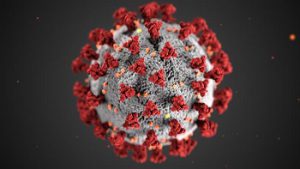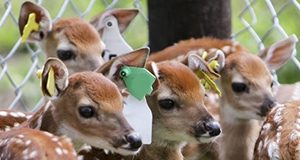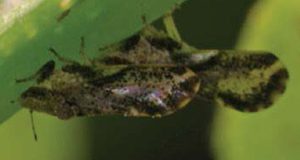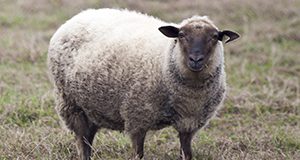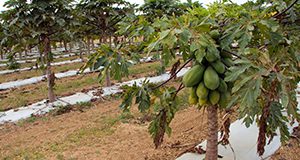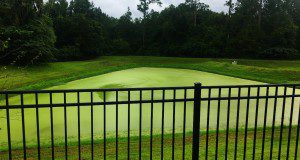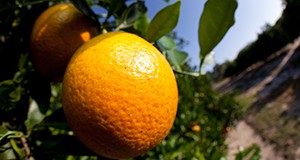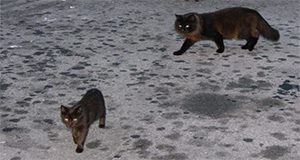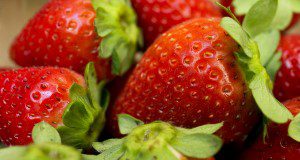¿Pudiera Propagarse el COVID-19 a través de los alimentos?
¿Puediera el virus alojarse en el cabello o en la barba?
¿Cuales son las practicas más efectivas que puedo implementar en mi establecimiento?
¿Existe algun procedimiento que deba seguir si un empleado es diagnosticado con COVID-19 o piensa que lo contrajo?
¿Puedo tomarle la temperatura a un empleado que venga a trabajar?
¿Qué sucede si un empleado tiene miedo y no quiere venir a trabajar o servirle a un cliente enfermo? ¿Qué tal si ya usó todos sus días de enfermedad (sick time)?
This is a Spanish language version of COVID-19 FAQ for Food Service: General Questions and Employee Health, written by Natalie Seymour, Mary Yavelak, Candice Christian, and Ben Chapman (NC State University Extension), and published by the UF/IFAS Food Science and Human Nutrition Department.
https://edis.ifas.ufl.edu/fs359
COVID-19 preguntas frecuentes para servicios de comida: recepcion de alimentos y sus empaques
¿Pudiera Propagarse el COVID-19 a través de los alimentos?
¿Es seguro recibir alimentos de estados o paises afectados por COVID-19?
¿Qué sucede si la cadena de suministro de alimentos se interrumpe?
¿Debo limpiar los empaques de alimentos antes de usarlos?
¿Qué debemos utilizar si queremos lavar y desinfectar?
This is a translation of FSHN20-14/FS337: COVID-19 FAQ for Food Service: Receiving and Food Packaging, written by Natalie Seymour, Mary Yavelak, Candice Christian, and Ben Chapman (NC State University Extension), and published by the UF/IFAS Food Science and Human Nutrition Department.
https://edis.ifas.ufl.edu/fs357
Preguntas frecuentes sobre el virus del COVID-19 en supermercados: limpieza y desinfección
¿Qué desinfectantes se deben utilizar?
¿Cómo deben manejarse las superficies y las áreas de auto servicio?
This is a Spanish language translation of FSHN20-09/FS332: COVID-19 FAQ for Grocery Stores: Cleaning and Disinfection, written by Natalie Seymour, Mary Yavelak, Candice Christian, and Ben Chapman (NC State University Extension), translated by Nelly Nelson, and published by the UF/IFAS Food Science and Human Nutrition Department.
https://edis.ifas.ufl.edu/fs356
COVID-19 para Supermercados: Recepción y empaque de alimentos
¿El virus COVID-19 puede transmitirse a través de los alimentos?
¿Es seguro aceptar alimentos de países o estados impactados por el virus COVID-19?
¿Deben limpiarse los paquetes de alimentos antes de usarlos?
Si queremos limpiar y desinfectar, ¿qué debe usarse?
This is the Spanish language version of FSHN20-08-Span/FS331, COVID-19 FAQ for Grocery Stores: Receiving and Food Packaging, written by Natalie Seymour, Mary Yavelak, Candice Christian, and Ben Chapman (NC State University Extension), translated by Liza Garcia-Jimenez, and published by the UF/IFAS Food Science and Human Nutrition Department.
https://edis.ifas.ufl.edu/fs355
Preguntas Frecuentes de COVID-19 para bancos de alimentos: recepción de alimentos y limpieza
¿Se puede propagar el COVID-19 a través de los alimentos?
¿Es seguro aceptar alimentos de países o estados impactados por COVID-19?
¿Deben limpiarse los empaques de alimentos antes de usarlos?
¿Cómo debe manejarse la limpieza y la desinfección?
This is the Spanish language version of FSHN20-7S/FS330, COVID-19 FAQ for Food Banks: Receiving Food and Cleaning, written by Natalie Seymour, Mary Yavelak, Candice Christian, and Ben Chapman (NC State University Extension), translated by Victor Blanco, and published by the UF/IFAS Food Science and Human Nutrition Department.
https://edis.ifas.ufl.edu/fs353
Diarrhea in Farmed White-tailed Deer Fawns
Diarrheal diseases, commonly called scour, are common in newborn ruminant farm animals including deer fawns. The clinical presentation can range from mild diarrhea without systemic disease to profuse, acute diarrhea associated with rapid dehydration and death, sometimes within hours of onset. Determining the particular agents associated with an outbreak of diarrhea is important for both prevention and treatment. This 5-page fact sheet written by Juan M. Campos Krauer and Samantha M. Wisely and published by the UF/IFAS Department of Wildlife Ecology and Conservation focuses on disease in fawns caused by pathogenic types of Escherichia coli, describes the pathogens and how they infect fawns, and includes advice about treatment and prevention.
https://edis.ifas.ufl.edu/uw463
Citrus Pest Quick Guide: Asian Citrus Psyllid (Diaphorina citri Kuwayama)
A one-page quick guide written by and published by the Entomology and Nematology Department presents the life cycle of the Asian citrus psyllid and provides several photos of the pest and the damage it causes to assist in identification.
https://edis.ifas.ufl.edu/in1271
Citrus Pest Quick Guide: Citrus Leafminer (Phyllocnistis citrella Stainton)

A one-page quick guide written by Lauren M. Diepenbrock and Jamie D. Burrow and published by the Entomology and Nematology Department presents the life cycle of the citrus leafminer and provides several photos of the pest and the damage it causes to assist in identification.
https://edis.ifas.ufl.edu/in1254
Sheep Bot Fly Oestrus ovis Linnaeus (1761) (Insecta: Diptera: Oestridae)
The sheep bot fly, Oestrus ovis, is an obligate parasite found all over the world. It cannot complete its life cycle without parasitizing the nasal passages, frontal and maxillary cavities, and sinuses of sheep. Unlike other flies, females do not lay eggs, instead depositing droplets containing live larvae into the nostrils of sheep. This 4-page fact sheet written by Hannah A. Sholar and Jennifer L. Gillett-Kaufman and published by the UF/IFAS Entomology and Nematology Department describes the life cycle of the pest and its veterinary significance and management.
https://edis.ifas.ufl.edu/in1267
Sea Turtle Conservation: 10 Ways You Can Help
All of Florida’s five species of sea turtles are in danger of extinction, largely as a result of people’s actions. Fortunately, however, there are simple steps Florida’s residents and visitors can take to help these remarkable animals. This illustrated 4-page fact sheet written by Jessica E. Swindall, Holly K. Ober, Margaret M. Lamont, and Raymond R. Carthy and published by the UF/IFAS Department of Wildlife Ecology and Conservation provides 10 easy-to-follow suggestions for ways people can reduce harm to sea turtles.
https://edis.ifas.ufl.edu/uw466
Small-to-Medium-Scale Sensory Evaluation of Horticultural Crops: Sensory Attributes
Given the economic impact associated with the value and acceptability of horticultural crops, sensory evaluation is commonly employed in research, product development, and quality control, with very specific parameters outlined for its proper execution. The resulting data can be used to make sound decisions about crop quality and marketability, ultimately determining the overall value. This new 3-page publication of the UF/IFAS Environmental Horticulture Department is the first in a series designed to assist producers in the small-to-medium-scale sensory evaluation of their horticultural crops, outlining sensory attributes essential to sensory evaluation, including appearance, aroma, texture, and flavor. Written by Sean Michael Campbell and Charles A. Sims.
https://edis.ifas.ufl.edu/ep579
Cost of Producing Fresh Market Grapefruit in Indian River in 2018/19
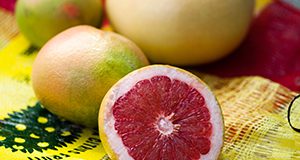
This 4-page fact sheet written by Ariel Singerman and published by the UF/IFAS Food and Resource Economics Department presents the cost of production per acre for growing fresh grapefruit in the Indian River region during 2018/19. Estimates reflect costs and cultural practices for a panel of growers, particularly important information at this time because, since citrus greening (HLB) was found, growers have been modifying their practices from year to year in an attempt to cope with the disease.
https://edis.ifas.ufl.edu/fe1078
Quantum GIS (QGIS): An Introduction to a Free Alternative to More Costly GIS Platforms
Geographic information system (GIS) software packages can be prohibitively expensive, causing many to shy away from mapping and spatial analysis. This 7-page fact sheet written by Jeffry M. Flenniken, Steven Stuglik, and Basil V. Iannone III and published by the UF/IFAS School of Forest Resources and Conservation introduces the reader to a free GIS software package called Quantum GIS (QGIS), walking the reader through simple GIS processes that can be used to visualize spatial patterns of importance to a variety of fields, including natural resources, agriculture, and urban planning. Learn how to create a land-cover map for a county of interest and create heatmaps that illustrate the density of a given attribute (Florida Springs for this example). This publication will benefit those interested in incorporating GIS into their work but who are unable to afford expensive proprietary GIS software packages, as well as anyone interested in learning a new GIS software package.
https://edis.ifas.ufl.edu/fr428
ET-Based Irrigation Scheduling for Papaya (Carica papaya) in Florida
Three irrigation scheduling methods (set schedule, ET-based, and tensiometer-based) were tested for papaya production in south Florida. ET-based irrigation scheduling was found to conserve water effectively. This 6-page document primarily focuses on the ET-based irrigation scheduling techniques for papaya under Florida conditions. Written by Haimanote K. Bayabil, Jonathan H. Crane, Kati W. Migliaccio, Yuncong Li, and Fredy Ballen, and published by the UF/IFAS Department of Agricultural and Biological Engineering, March 2020.
https://edis.ifas.ufl.edu/ae540
Preguntas frecuentes del COVID-19 para los bancos de alimentos consejos a poner en practica
¿Cuáles son los pasos que deben implementar?
¿Qué debe comunicarse a los clientes?
¿Cuál es el protocolo en el caso de que un empleado o cliente se diagnostice con COVID-19 o piense que lo tiene?
This is the Spanish-language version of FSHN20-6/FS329: COVID-19 FAQ for Food Banks: Best Practices and Communication. Written by Natalie Seymour, Mary Yavelak, Candice Christian, and Ben Chapman (NC State University Extension), translated by Jenny Aviles Rodriguez, and published by the UF/IFAS Food Science and Human Nutrition Department.
https://edis.ifas.ufl.edu/fs352
COVID-19 Preventative Measures: Cleaning and Disinfecting Reusable Bags
Current evidence suggests that novel coronavirus may remain viable for hours or days on a variety of surfaces. Cleaning followed by disinfection is recommended by the CDC as a best practice measure for prevention of COVID-19 and other viral respiratory illnesses in households and community settings. This new flyer, published by the UF/IFAS Food Science and Human Nutrition Department and written by Natalie Seymour, Mary Yavelak, Candice Christian, and Ben Chapman (NC State University Extension), provides information on safe cleaning and disinfection of reusable bags.
https://edis.ifas.ufl.edu/fs354
Sources and Transformations of Nitrogen in Urban Landscapes
With 80% of Florida’s residents living within 10 miles of the coast, Florida’s aquatic resources are directly affected by urbanization. The intent of this new 6-page publication of the UF/IFAS Department of Soil and Water Sciences is to describe the urban nitrogen cycle for a nontechnical audience. Ultimately, this document is intended for individuals working in urban environments and concerned about nutrient pollution and water quality issues, but do not have a technical background and want to improve their understanding of nitrogen cycling. Written by Alexander J. Reisinger, Mary G. Lusk, and Ashley R. Smyth.
https://edis.ifas.ufl.edu/ss681
Cost of Producing Processed Oranges in Southwest Florida in 2018/19
This 4-page fact sheet written by Ariel Singerman and published by the UF/IFAS Food and Resource Economics Department estimates the cost of production per acre for processed oranges grown in southwest Florida in 2018/19 based on a survey of southwest Florida growers.
https://edis.ifas.ufl.edu/fe1077
How Effective and Humane Is Trap-Neuter-Release (TNR) for Feral Cats?
As the number of feral cats continues to increase, land managers, public health officials, and private citizens are voicing concerns about how to address the nuisance and public health impacts, as well as animal welfare concerns, that feral cats create. Trap-neuter-release programs aimed at reducing feral cat populations without euthanasia are gaining popularity in the United States. But do they work? Authors Mark Hostetler, Samantha M. Wisely, Steve Johnson, Elizabeth F. Pienaar, and Martin Main discuss the pros and cons of trap-neuter-release programs in this 8-page fact sheet published by the UF/IFAS Department of Wildlife Ecology and Conservation.
https://edis.ifas.ufl.edu/uw468
Common Strawberry Diseases in Florida
This new two-page publication of the UF/IFAS Plant Pathology Department describes symptoms of most common strawberry diseases in Florida and summarizes the efficacy of fungicides labeled for management of such diseases. Written by Michelle S. Oliveira and Natalia A. Peres.
https://edis.ifas.ufl.edu/pp354
